Meeting Common Core in the Forest.
- ForestK

- Mar 14, 2018
- 5 min read
Updated: Jun 14, 2020

No desks, no walls, and homework is optional. How are we meeting Common Core State Standards?
The Kindergarten Common Core provides educators with a number of standards and goals that students should be able to achieve before they enter the 1st grade. These standards are fairly open ended which allows teachers the opportunity to decide how their students discover, learn and grow to meet each goal.
For more information on California's Common Core Standards you can visit https://www.cde.ca.gov/re/cc/
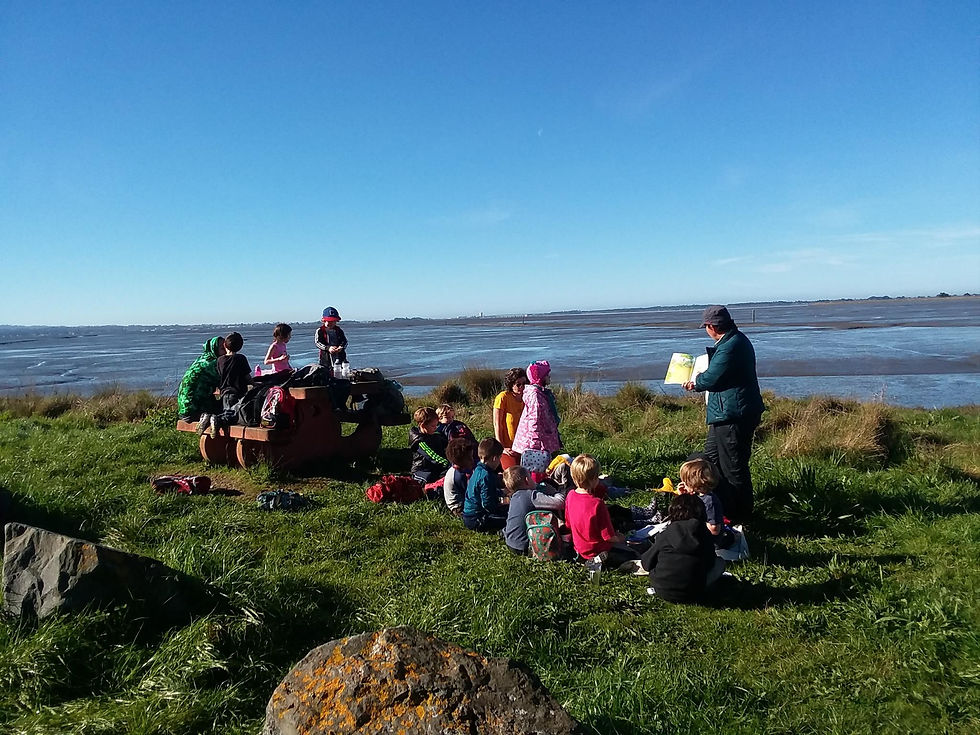
~Free play~
We do a lot of exploration. At first glance this may seem like a lot of, well, chaos. Children are digging in the dirt, making houses out of sticks and stones, they're running and climbing and jumping, they're playing make-believe games and telling stories. This is loud, because of course we are outside and that means outside voices are fair game. If you look a little closer you'd find that this type of student led exploration lends itself to an enormous amount of learning and personal discovery and satisfies a number of CC standards.
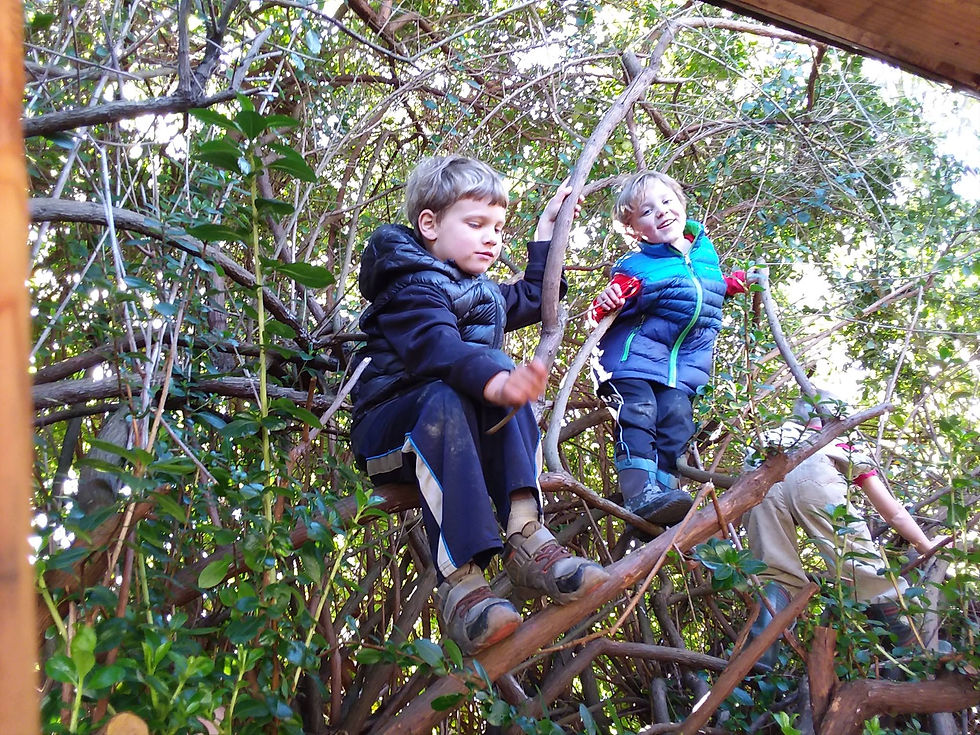
CCSS.ELA-LITERACY.W.K.8 With guidance and support from adults, recall information from experiences or gather information from provided sources to answer a question.
Many questions arise as we explore the natural world: “Why does a bird’s feather have a long white part on the bottom with dark on the top?” “How does a spider spin a web?” “Why does the water at Oyster Beach look higher today? “ We bring answers to the student through discussions and reading texts on the topics of interest.

CCSS.ELA-LITERACY.L.K.1.D Understand and use question words (interrogatives) (e.g., who, what, where, when, why, how).
These questions occur naturally in the course of a day as we explore the natural world. They ask one another as they play, they ask the group in circle, they ask the teachers. We record these questions in our big book as we explore topics. As questions arise that cannot be answered by the teachers or other students we gather texts which can help us find the answers.

~Morning Circle~
During morning circle time students participate in a number of different activities. We work in small groups and focus on numbers, letter sounds and various prompts throughout the year.


CCSS.ELA-LITERACY.RF.K.3.A Demonstrate basic knowledge of one-to-one letter-sound correspondences by producing the primary sound or many of the most frequent sounds for each consonant.
CCSS.ELA-LITERACY.L.K.1.A Print many upper- and lowercase letters.
We practice letter sounds written on rocks and leaves. We say the sounds as we write on our mini-chalkboards made from slices of redwood trees. The students love to rearrange the letters to make silly words. We write our names in the sand and form letters using shells at Oyster Beach.
CCSS.MATH.CONTENT.K.MD.A.2 Directly compare two objects with a measurable attribute in common, to see which object has "more of"/"less of" the attribute, and describe the difference.
We compare the sizes of pumpkins, sticks, rocks. Which one is biggest, which is smallest? Which one is the same length as your arm?
CCSS.ELA-LITERACY.SL.K.1.A Follow agreed-upon rules for discussions (e.g., listening to others and taking turns speaking about the topics and texts under discussion).
We have been working on how to take turns while speaking in a group. We have a very enthusiastic group who loves to share their ideas. They are learning to raise their hands in the groups setting when they have something to say. They are beginning to understand that when everyone speaks at once no one is heard.

CCSS.ELA-LITERACY.W.K.2 Use a combination of drawing, dictating, and writing to compose informative/explanatory texts in which they name what they are writing about and supply some information about the topic.
The students dictate their observations and questions in regards to topics that we have read about or experienced. They have observed the chickens in the yard while drawing what they see. They dictate their thoughts about what they know or want to know about birds, insects and arachnids. They draw pictures of the crabs found on our walk at Oyster Beach. They make written plans for what they will create for building time.
CCSS.ELA-LITERACY.SL.K.1 Participate in collaborative conversations with diverse partners about kindergarten topics and texts with peers and adults in small and larger groups.
We have focused on different topics over the last few months. These topics are chosen based on what the students need as a group, what is occurring in the natural environment and what the students interests are. Some of the topics we have focused on have included: how to be a good friend, learning about arachnids, insects, birds, ocean animals, etc. We read about these topics, explore hands-on objects/projects and discuss the ideas as a group.
CCSS.ELA-LITERACY.RF.K.2.B Count, pronounce, blend, and segment syllables in spoken words.
In circle we practice phonemic awareness skills. We recite: With our hands we clap, clap, clap. With our feet we tap, tap, tap. Clap… c-l-a-p, tap…t-a-p, sap…s-a-p. We make motions with our hands as we say each sound in the word.
~Story Time~
We tell a lot of stories! We have Tell-a-Tale Tuesdays where the teachers put on a type of forest puppet show focused on whatever our theme for that week/month may be. During storytime we learn about the forest and its inhabitants, we learn how to be better friends as we watch familiar characters work through their problems and find solutions. Students often make predictions and offer up their suggestions for solutions.
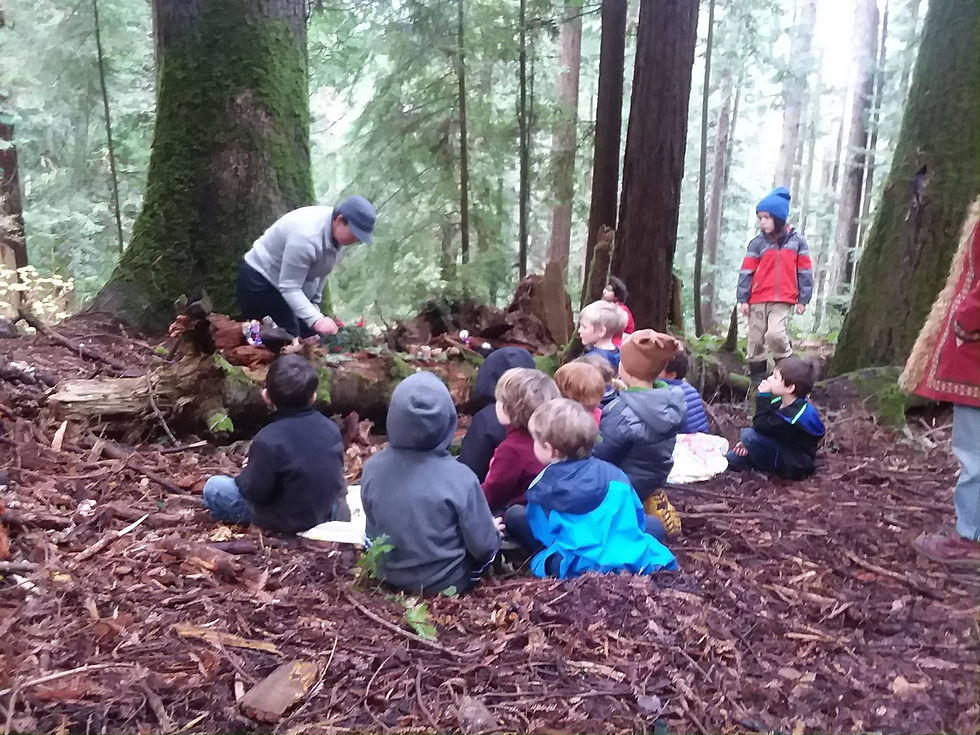
CPLF 4.1 (Pre-K Standard)
Demonstrate knowledge of details in a familiar story, including characters,
events, and ordering of events through answering questions (particularly summarizing, predicting, and referencing), retelling, reenacting, or creating artwork.
We tell a weekly story on Tell-a-Tale Tuesday. These are fictional stories that communicate some facts about our natural world or a particular lesson that we are working on. Following the story the students have access to the puppets and the “theater” (usually presented on a log or on top of a bed of pine needles). Students sometimes reenact the play word for word, other times they create their own versions using the puppets from the show.
One story we told this session was Mother Holle, adapted from Brothers Grimm. Even our youngest four year old was able to retell the story using the same words the teacher demonstrated. She retold the entire story and then made her own version.
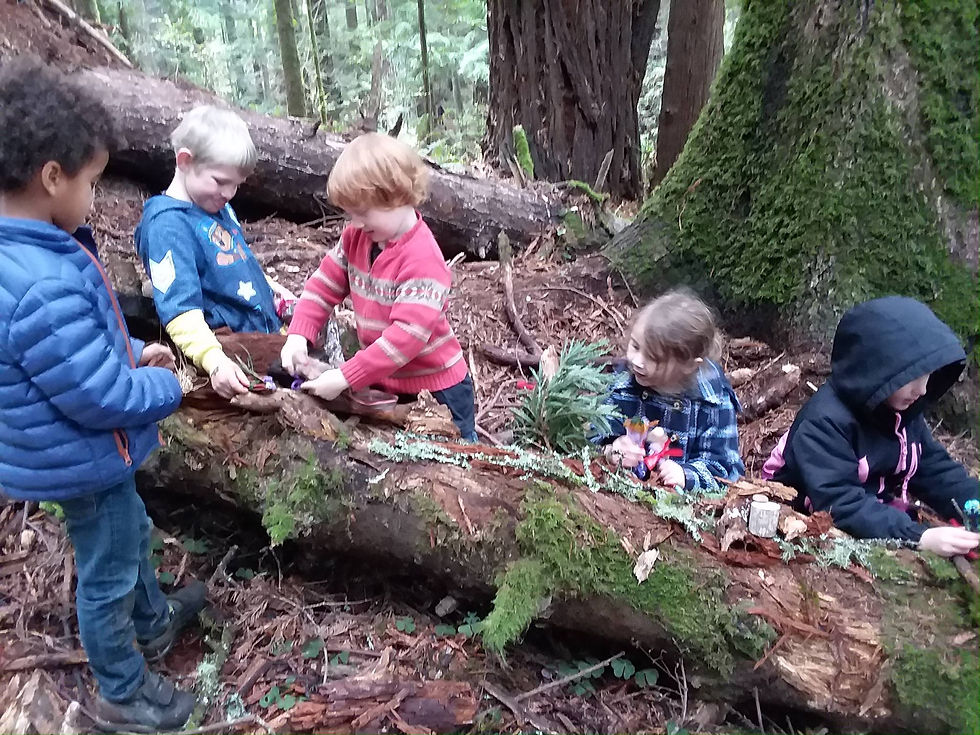
With prompting and support, identify characters, settings, and major events in a story.
We break into small groups to read a chosen story. The teacher reads the story as the students look for clues that tell us about the setting, characters and main events. The students set up the setting using objects from the natural setting. A stump becomes the well where the Frog Prince drops his ball. A fallen tree becomes the bridge for the Billy Goats Gruff. The students set up their own version of the story and reenact it using objects from the forest.

Introduction by Katherine Mather, Forest Kindergarten Aide
Observations and correlating Common Core provided by Violet Hales, Forest Kindergarten Lead Teacher.

.jpg)

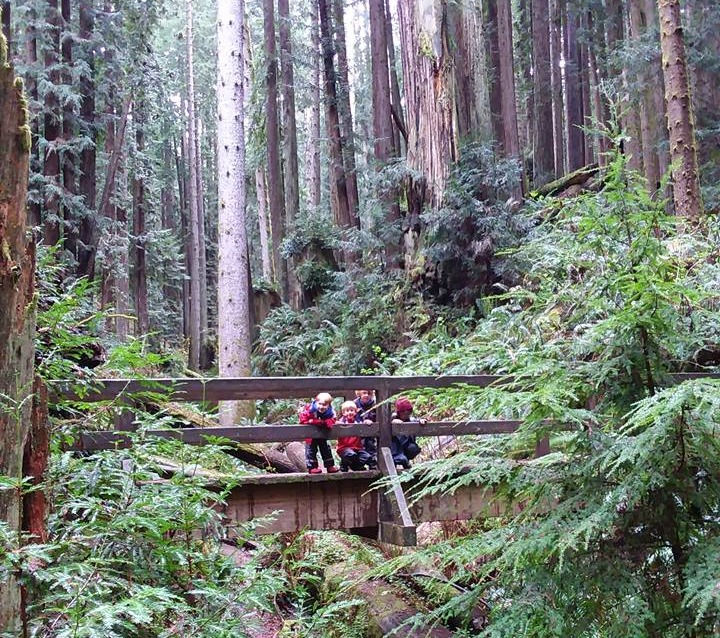

atd tire warehouse
atd tire wholesale
atd tires
atd tires and wheels
atd tires baton rouge
atd tires denver
atd tires houston
atdonline